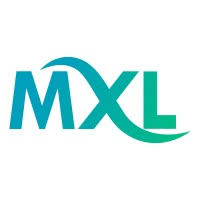
Robinjasper1109
Uploaded on Jul 17, 2025
In today's fast-evolving corporate landscape, the need for continuous, effective training is paramount. Yet, traditional training models often fall short, struggling to keep pace with rapid industry changes and the diminishing attention spans of modern learners. For organizations new to the concept of agile learning, understanding how to harness its power can seem daunting. This is precisely where microlearning steps in, offering a transformative approach to delivering impactful training that truly resonates. For beginners, adopting a few powerful strategies can ensure this bite-sized learning delivers maximum impact from day one. At its core, microlearning is about delivering highly focused, digestible units of information – often called "snippets" – designed to be consumed in minutes, not hours. These concise modules address specific learning objectives, making knowledge acquisition efficient, relevant, and easily retainable. Unlike traditional lengthy courses that can lead to information overload and low engagement, microlearning integrates seamlessly into an employee's workflow. This flexibility is key to its effectiveness, allowing learning to become an organic, continuous process rather than a disruptive event. A robust Microlearning Platform is the foundation for this, providing the infrastructure to create, deliver, and manage these powerful snippets. For newcomers to microlearning, the first powerful strategy is "Single Focus, Clear Objective." Each microlearning snippet should target one, and only one, learning outcome. Avoid the temptation to pack too much information into a single module. Whether it's a microlearning course on a new policy or a procedural step, define what the learner should know or be able to do immediately after consuming that snippet. This clarity ensures that every minute spent learning is productive and immediately applicable, directly enhancing productivity. Consider its application across various industries. In Finance, where compliance updates are frequent and critical, a microlearning snippet might focus solely on a new KYC (Know Your Customer) verification step. In Retail, a snippet could demonstrate exactly how to operate a new point-of-sale feature. This targeted approach prevents cognitive overload, a common pitfall for new learners. The second strategy is "Leverage Diverse Formats for Engagement." Microlearning doesn't mean just text. The most impactful training utilizes a variety of engaging multimedia formats. Think short, dynamic videos, interactive quizzes, vibrant infographics, step-by-step guides with annotated images, or brief audio clips. These diverse Microlearning Tools cater to different learning styles and keep engagement high, which is crucial for retention. An effective Microlearning Platform should support a wide array of content types to facilitate this. For example, in Banking, a brief animated video could explain a new anti-money laundering protocol. In Mining, a short, visual checklist on pre-shift equipment checks can be far more effective than text. In Health Care, an interactive simulation of a new patient admission process can provide hands-on practice in a safe environment. The key is to choose the format that best conveys the specific learning point. A third powerful strategy, especially for beginners, is "Embrace AI for Rapid Content Creation and Personalization." The idea of creating numerous small modules might seem daunting, but modern technology has simplified this. An AI-powered authoring tool can be a game-changer. These tools can analyze existing documents, presentations, or even raw knowledge bases and intelligently convert them into microlearning snippets. This significantly speeds up content development, making it accessible even for those new to instructional design. Furthermore, an AI-Powered Learning Platform can personalize the learning journey. By analyzing a learner's interactions, performance data, and expressed needs, the AI can recommend specific microlearning applications relevant to their role and current challenges, ensuring highly impactful and tailored training without manual intervention. For instance, a Pharma company could use an AI-powered tool to quickly generate microlearning modules on new drug safety data, ensuring rapid dissemination to medical representatives. In Insurance, an AI could help create customized learning paths for agents based on their performance in selling different policy types. Finally, "Integrate and Reinforce with a Microlearning LMS." Microlearning should not exist in isolation. For sustained impact, it needs to be part of a broader learning ecosystem. A dedicated Microlearning LMS (Learning Management System) is essential for beginners to manage, deliver, and track all their microlearning initiatives effectively. This system allows for easy assignment of Microlearning Courses, tracks completion rates, and provides valuable analytics on knowledge retention and application. This integration also supports spaced repetition—a powerful learning technique where information is revisited at optimal intervals—further enhancing long-term memory. In the Oil and Gas sector, an LMS can ensure that safety refreshers are delivered consistently and frequently, with analytics tracking compliance. In sectors like Manufacturing (often part of general industry, but relevant here), it can track completion of operational best practices across different shifts. By focusing on single, clear objectives, leveraging diverse and engaging formats, embracing AI for content creation and personalization, and integrating effectively with a specialized LMS, organizations new to this approach can unlock the immense potential of microlearning. This smart, agile approach to training not only empowers employees with the knowledge they need, when they need it, but also drives measurable improvements in performance and positions the business for sustainable growth in an ever-changing world.

Comments